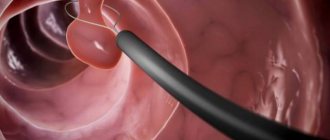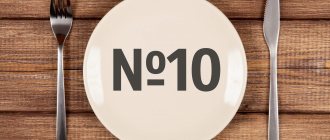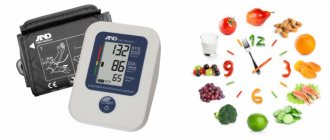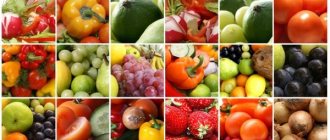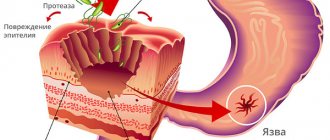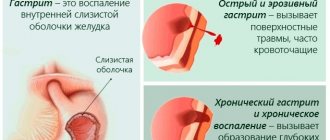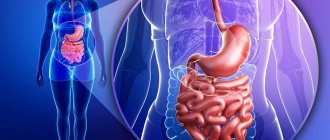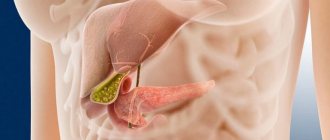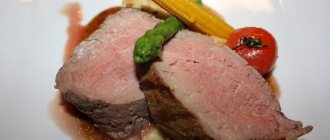The diet for gastric erosion is selected based on the intensity of pain symptoms and the degree of damage to the mucous membrane. In this case, you need to take into account desirable and prohibited foods in order to speed up the regeneration processes.
It should be understood that proper nutrition for gastric erosion is the main approach to treatment. If you do not adhere to the required diet, the disease will progress. The erosive process can develop into an ulcer, which will bring acute pain symptoms and many complications.
Drug therapy in this case will give only a temporary effect. A balanced diet for diseases of the digestive system can improve motility, stimulate the healing of erosions, ulcers and other defects of the mucous membrane. The inflammatory process is eliminated, and pain symptoms gradually disappear.
Studies were conducted with several groups of patients. At the same time, drug therapy with a usual diet was compared with treatment that included a diet. In the first case, the result was 50% less effective than in the second. This once again proves the benefits of therapeutic nutrition.
All patients should be aware that erosion is a pre-ulcerative condition. Therefore, you need to approach the preparation of a diet according to all the necessary rules and regulations provided by gastroenterologists.
What is gastric erosion
Gastric erosion is a pathology in which a defect appears in the gastric mucosa. This disease does not affect the muscle layer, so if the erosions last, then there will not even be any scars left on the mucous membrane.
Erosions can take any shape and have a size from 0.3 mm to 1.5 cm. Lesions can be single or multiple. If most of the gastric mucosa is affected, the disease is called hemorrhagic gastritis. Bleeding usually occurs when there is an ulcer not only in the stomach, but also in the duodenum.
Wounds can appear in any section or part of the stomach. It is believed that this is a previous stage of stomach ulcers and ulcers can stimulate the development of colon cancer.
There are three types of pathology:
- primary;
- secondary, usually a concomitant disease due to liver or heart failure;
- malignant, forming against the background of cancer or in the presence of Crohn's disease.
According to the degree of progression, chronic and acute forms are distinguished. The first form usually proceeds extremely quickly and can be eliminated in just 10 days; in extreme cases, treatment can last up to 2 months. The chronic form can drag on for years.
Basic nutritional tips for erosion
The diet for erosion of the stomach, duodenum and esophagus spares the digestive organs mechanically, thermally and chemically.
Let's consider basic nutritional tips for damage to the gastrointestinal tract. First, you should limit your salt intake: no more than 12 grams per day. Secondly, the food must be properly prepared. You should remove fried, fibrous and hard foods from your diet and switch to boiled and steamed foods. Thirdly, medical specialists in the field of gastroenterology categorically prohibit overeating and recommend eating less, but more often (6 times a day in small portions).
Fourthly, you should exclude recipes with spices, as they irritate the mucous membranes. The food temperature should not be less than 18 degrees and more than 60 degrees Celsius.
It is recommended to follow a diet for gastritis and erosion of the stomach and other gastrointestinal organs for at least 60 days. After the symptoms disappear, you need to consult an experienced medical specialist in the field of gastroenterology and gradually switch to a normal diet in the absence of contraindications. Patients suffering from gastritis should follow a diet for gastric erosion with a gentle menu for a week . By following the above recommendations, you can significantly speed up the treatment of the disease and get rid of unpleasant symptoms in the shortest possible time.
Causes of gastric erosion
Alas, doctors cannot answer unambiguously and clearly what provokes the appearance of erosions in the stomach. One of the reasons is heredity, against which autoimmune processes appear with the formation of defective cells. It is also believed that the disease is a consequence of inhibition of epithelial restoration.
Provoking factors include:
- burns;
- surgical intervention;
- smoking;
- injuries of the gastrointestinal tract;
- sepsis;
- long course of treatment for NPP;
- alcohol abuse;
- fungal diseases of the stomach;
- constant stress;
- blood stagnation;
- chronic gastrointestinal pathologies;
- poisoning, including toxic substances;
- lack of vitamin B12;
- heart failure;
- diabetes;
- neoplasms in the stomach area.
There is also an opinion that the bacteria Helicobacter pylori is often a provocateur. After all, these bacteria are found in 90% of patients.
https://youtu.be/PpBmJ5OpB-0
Symptoms for which a diet should be followed
Erosion on the gastric mucosa is formed as a result of exposure to unfavorable factors. They can appear with long-term use of anti-inflammatory drugs, consumption of hot, hot and spicy foods, or poisoning with chemicals.
Adhering to proper nutrition should begin when the patient has unpleasant symptoms in the form of:
- painful sensations in the abdomen of various types;
- nausea, belching, periodic vomiting;
- stool disorders:
- constipation or diarrhea;
- increased brittleness of nails, dryness and hair loss;
- gradual weight loss.
You can start following the diet yourself. But only a doctor can say exactly what you need to eat based on individual characteristics. The body must receive all the vitamins and necessary substances. The ratio of fats, proteins and carbohydrates is also rationally selected.
Symptoms of erosive gastritis
In the chronic course of the disease, the disease usually affects the body or fundus of the stomach. In the acute stage, the antrum is usually affected.
There are two types of symptoms. Ulcer-like, which are characterized by severe pain, usually occurring after eating. Occurs against the background of heartburn, belching and gag reflex. Such symptoms are characteristic equally for both acute and chronic stages.
Hemorrhagic symptoms can be completely asymptomatic and are typical for individuals with anemia.
Features of diet for different forms of erosive gastritis
Along with the general rules, there are specific dietary features for each form of erosive damage to the walls of the stomach.
Acute form
The most strict diet is for acute erosive gastritis. Sharp paroxysmal pain, continuous vomiting, loose stools streaked with blood indicate serious damage to the gastric mucosa, its inflammation with the formation of a focus of erosion. At the very beginning of the disease, food intake is excluded.
During the first week the patient is allowed to eat:
- liquid boiled and mashed porridge;
- boiled eggs;
- natural jelly.
When the acute course of the disease passes, the diet is varied with vegetable soups, omelettes, dietary meat, and weak tea. A diet with strict restrictions lasts at least 3–4 weeks, then for three months, for prevention, the patient must eat with the restrictions common for erosive gastritis.
Chronic form
The diet during exacerbation of the chronic form coincides with the restrictions adopted for acute inflammation. The menu for erosive gastritis in remission includes:
- first courses - puree soup with vegetable broth, fish soup, milk soups;
- steamed meat dishes; fish;
- boiled vegetables.
In case of pathology with high acidity, dietary table No. 1 is prescribed, with frequent consumption of milk, dairy products, and white bread crackers. Table No. 2 for patients with insufficient secretion of gastric juice allows the consumption of strong broths, tea, coffee, moderately salty foods (a little herring, pickles), dried black bread.
Table No. 1 (click on the picture to enlarge)
Reflux gastritis
With erosive reflux in the acute stage, contents from the duodenum are refluxed into the lower part of the stomach, where there are already foci of erosion. The alkaline environment of the intestines violently interacts with hydrochloric acid, eroding wounds on the walls of the epigastrium. Usually the cause of this phenomenon is overeating.
During the first two days, fasting is indicated to give the stomach rest. You are allowed to drink only unsweetened tea or mineral water. Further diet - slimy and pureed porridges and soups, meatballs and steamed chicken cutlets, boiled vegetables. Dietary restrictions must be followed for at least 30 days.
Antral-erosive form
The antrum of the stomach is located at the border where the food bolus forms to pass into the duodenum. The narrowing of the epigastrium in this place makes its walls especially vulnerable to the mechanical effects of coarse food fibers; internal bleeding can be a complication. In the first two days after an attack, special attention is paid to fasting. Then you will have to eat in fractional portions while lying down. We wrote more about this form of the disease here.
Sample menu for antral gastritis in the acute stage:
- vegetable broth soups;
- porridge and vegetable puree;
- meatballs;
- drinks: oatmeal jelly, tea, compote.
Fresh vegetables and fruits, juices, and fermented milk products are prohibited.
How to eat properly with erosive gastritis
After restoration of the mucous membrane, special nutrition is prescribed. It is based on some basic principles:
- complete absence in the diet of foods that can irritate the mucous membranes, such as spicy, sour, fried foods and others;
- no solid foods, that is, nuts, crackers;
- strong drinks are also blacklisted;
- complete abstinence from alcohol;
- ban on sour fruits;
- you will have to give up all foods that can cause flatulence and bloating, for example, legumes;
- no fatty foods allowed.
All dishes must be steamed or boiled. Vegetable oils and butter are necessarily included. You need to eat at least 5 times throughout the day. Under no circumstances should you allow yourself to feel hungry.
Principles of a therapeutic diet
The diet for erosive gastritis is stricter than that prescribed for a common disease. It is, of course, based on the following principles, common to most types of gastric diseases:
- Consumption of food often and in small portions, without allowing the stomach to be completely full;
- Avoiding cold and hot food and drinks , since exposure to low and high temperatures worsens the condition of the mucous membrane and interferes with the healing process of erosions;
- Exclusion of hard, hard, fibrous, excessively dry foods to avoid mechanical irritation of the mucous membrane and walls of the stomach;
- Elimination of sour, spicy, fatty, fried, salty foods, pickled foods, carbonated drinks, fresh juices, which can chemically irritate the stomach;
- Replacing, if possible, the form of medications taken - oral medications with injections, suppositories and other variations (in this case, the replacement of the dosage form of the drug is carried out by those doctors who prescribe it, and not by the patient himself on his own initiative);
- Complete exclusion of alcoholic beverages (if the patient takes alcoholic tinctures of herbs or other alcohol-containing medications, he should consult a doctor to replace them).
But at the same time, the diet for chronic erosive gastritis differs from that provided by table number one according to M.N. Pevzner and is intended for patients with chronic gastritis. This is explained by the presence of a factor complicating the disease - the formation of erosions.
It is necessary to maintain a diet not only during periods of acute manifestations of erosive gastritis. A well-chosen diet should become an integral part of the patient’s healthy lifestyle. Diet therapy is leading in the complex treatment of gastrointestinal diseases, including erosive gastritis. It is thanks to a properly selected and balanced diet that the stomach will fully cope with its function and restore its normal state.
Drug treatment is aimed more at normalizing the patient’s condition as a whole - relieving attacks of pain, eliminating heartburn, feelings of heaviness, bloating and other unpleasant manifestations of the disease. The main restorative value still belongs to diet.
A gastroenterologist, when prescribing dishes or products as part of a dietary diet, must take into account the acidity of gastric juice. Those products that are indicated for gastritis with high acidity are not suitable for therapeutic nutrition of patients with low acidity and vice versa. The strictest diet is on days of exacerbation. As the patient’s well-being improves and the patient’s condition normalizes, it gradually expands with constant monitoring.
We recommend: Diet for gastritis with high acidity
Nutrition for acute erosive gastritis
First of all, the diet should not contain stale food products, especially expired ones. They provoke a new exacerbation. All dishes can be stored in the refrigerator for no more than 2 days.
It is necessary to give up salt. As a last resort, there should be very little of it in the diet. You should not be afraid of this, since the same meat contains many sodium ions, which will help improve the digestive process and replace table salt.
The main principle for this type of disease is a balanced diet, which should contain dietary supplements, vitamins and micro- and macroelements necessary for the existence of the body. No reduction in caloric intake is required.
Advantages and disadvantages of the diet
| Advantages | Minuses |
|
|
What is allowed for gastric erosion
As with other stomach diseases, with erosion you will have to give up fatty foods. But you can eat cheese and sour cream, with low fat content. Milk, low-fat fish and meat, and vegetables are allowed, but they must be grated so as not to further damage the mucous membrane. It is also allowed to consume porridge, but with the condition that the cereals will also be thoroughly ground.
But don’t be upset, such a diet does not imply lifelong adherence to it. It’s nice that this pathology is quite treatable.
Nutrition as part of treatment for erosion
Gastric erosion is an insufficiently studied pathology - the collection of clinical data became available after the development of accessible methods for visual diagnosis of the mucous membranes of the stomach and duodenum.
There are 2 main types of erosion:
- primary, which is defined as an independently occurring process;
- secondary, occurring against the background of the underlying disease as a concomitant disease.
Another type of erosion, which can be classified as a secondary type, is malignant, which develops as a concomitant process to the main oncological disease.
In the acute primary form, erosion lasts up to 14 days, in severe cases it lasts up to 60 days. When the disease becomes chronic, the disease with periodic exacerbations lasts for years, in some cases accompanied by bleeding.
The main complaints of patients with chronic erosion:
- pain in the upper abdomen;
- belching air;
- heartburn;
- weakness, fatigue.
The mechanism of occurrence of the pathology is not fully understood, but the processes that occur in the gastric mucosa are well studied. Observations of patients with erosion have shown that with mild or moderate erosion, a properly formulated diet can normalize the patient’s condition without the use of medications.
The purpose of the diet is to reduce the secretion of gastric juice and its aggressiveness to stop the destructive effect on the gastric mucosa and reduce pain. Treating erosion with nutrition will be a longer process than using medications, but no less effective.
Dietary table No. 1
This diet is prescribed at the acute stage, when the stomach hurts severely. The main goal of the diet is to stimulate the healing process of ulcers, reduce the inflammatory process, while fully providing the body with all useful substances. As a rule, it is observed while still in the hospital.
Absolutely everything is cooked using water or steam. The products are ground to a mushy state. The duration is determined by the attending physician, depending on the healing process.
In this case, the patient needs to eat in small portions so as not to overload the gastrointestinal tract and not cause increased secretion of gastric juice.
The energy value of the diet should not exceed 2600 Kcal. It is permissible to drink no more than 1.5 liters per day.
Some cooking recipes
Steam omelette is a tasty and healthy dish that can be varied by adding pieces of vegetables, meat, and fish. To prepare, you need to take 2 large eggs or three small ones, ½ cup of milk, a spoonful of butter, salt to taste. Beat eggs with milk and salt until fluffy foam appears. The mixture is poured into a well-greased mold - ceramic, metal or silicone - no more than 4 cm high. Place the mold in a steam bath or in a double boiler and hold until it hardens. Before serving, drizzle with melted butter.
Mucous oatmeal soup is useful for erosive gastritis - it gently flows around the walls of the stomach, protecting them from the aggression of gastric juice. To prepare, you need to take 3/4 cup of milk, the same amount of water, 3 tablespoons of oatmeal.
The flakes are poured with water and placed on low heat, and boiled until the water evaporates. Pour milk into oatmeal and boil until mucus appears. Remove from heat. Add ¼ teaspoon of salt and sugar to the finished soup, add butter to the plate. Served with toasted bread.
Recipes for dietary dishes that can be offered for stomach erosion, diseases of the duodenum, and large intestine (their treatment requires adherence to a strict diet) can be found on culinary sites, or you can come up with them yourself using the general rules of dietary nutrition. This will allow you to eat varied and tasty.
Diet No. 1B
The diet of this diet will please the patient more. It is expanded and aimed at reducing the symptoms of gastric irritation and accelerating the regeneration of the mucosal surface.
Almost all dishes are similar to those allowed under diet No. 1a, but it is already permissible to eat crackers, but not more than 100 grams throughout the day. You can eat meat and fish, in small quantities and always chopped. Soups and porridges can now be prepared not only with water, but also with milk, still with the grinding of all the components of the dish.
Menu for the week
When many people hear the word “diet,” they associate it with healthy, but tasteless food that does not bring satisfaction. For stomach erosion, the permitted list of foods is quite large, and even with limited methods of preparing foods, you can prepare a fairly large number of different dishes from them. The menu for stomach erosion for a week (for a month) is developed including mandatory norms of nutrients and calorie requirements.
On Monday the menu may include:
- slimy oatmeal with a tablespoon of honey, tea;
- glass of jelly, 3 pcs. hard cookies;
- slimy pureed cereal soup, steamed chicken cutlets, dried fruit compote;
- baked apple with cottage cheese;
- vegetable stew of zucchini, potatoes and meat;
- a cup of tea with milk, a cracker.
Menu for Tuesday:
- cottage cheese casserole, chamomile tea;
- baked apple;
- pasta soup, steamed fish croquettes, herbal tea;
- berry soufflé;
- buckwheat porridge with milk;
- banana.
On Wednesday the patient can eat:
- lazy cottage cheese dumplings, tea;
- banana;
- beetroot borscht with zucchini, steamed chicken cutlet, mashed potatoes, milk sauce, broth
- rosehip;
- soft pear;
- zucchini stew with vegetables and meat;
- yogurt and crackers.
On Thursday, the menu can be composed of the following dishes:
- cottage cheese, chamomile tea;
- baked apple;
- tomato soup, vegetable stew, steamed chicken cutlet, dried fruit broth;
- yogurt and dry biscuits;
- mashed potatoes, stewed liver with vegetables, rosehip decoction;
- banana.
List of dishes for Friday:
- 2 eggs in a bag, berry jelly;
- salad of boiled beets with steamed dried apricots or prunes;
- vegetable soup, mashed potatoes, steamed fish cutlet, dried fruit broth;
- yogurt, crackers;
- rice stewed with vegetables, chamomile tea;
- tea with milk, crackers.
On Saturday, a patient with erosion can consume:
- rice casserole with apples, berry jelly;
- tea with crackers;
- pureed buckwheat soup, chicken stew in sour cream sauce, mashed potatoes, compote.
- baked apple with cottage cheese;
- vegetable stew, a piece of bread, rosehip tea;
- banana.
On Sunday the menu may include:
- cottage cheese casserole, chamomile tea;
- yogurt and crackers;
- rice and potato soup, buckwheat porridge with stewed liver, compote;
- rosehip tea, crackers;
- mashed potatoes with meatballs and vegetables, tea;
- baked apple or rosehip decoction.
During remission, the menu can include sandwiches with diet sausage or ham, soft cheese, cottage cheese paste, salt, a spoonful of cream and chopped herbs.
Several recipes that are healthy for the stomach
Allowed products for stomach erosion can be combined in different variations. Experts recommend steaming, boiling or baking dishes. Modern electrical appliances will help with this: multicookers, steamers, ovens. If there is no special equipment, then you can simply boil the food in a saucepan. Apples, bananas, and pears must first be peeled and pitted. If you have a blender, then they need to be thoroughly chopped.
Your doctor will tell you what to eat during treatment. And to prepare delicious dishes, you should know several recipes.
- Proper nutrition involves including vegetable purees in your diet. Before cooking, vegetables are washed and peeled. Cut into small pieces and place in cold water. The liquid is lightly salted and placed on the stove. You should wait for it to boil, and then reduce the heat to low and cook the dish for 10-15 minutes. As soon as the vegetable is boiled, take it out and chop it with a fork or blender. No spices or herbs should be added. The dish is seasoned with low-fat sour cream or cream. To diversify the menu a little, you need to select a new type of vegetable each time.
- The diet should include a lot of soups and cereals. They should be cooked in water. Cooking recipes will differ only in the volume of cereal poured and its type. The base is milk or water. Semolina, oatmeal or rice are added to the liquid. When finished, add a piece of butter.
- Meals should include eating eggs. They need to be boiled, and the degree of readiness may vary. The diet allows you to cook steamed omelettes or egg-milk soups. To do this, you need to pour a few eggs into cold milk, and then put the mixture on low heat to cook.
- In case of stomach erosion, fish and lean meat must be consumed. Since diseases of the digestive organs require eating pureed food, it is better to make cutlets, meatballs, and soufflé from these products.
The diet is part of complex therapy. It helps enhance the effect of drug therapy. To achieve the desired result, the menu should not include dishes that irritate the mucous membrane and increase acidity.
List of allowed dishes
Nutrition for gastric erosion should be gentle. Dishes should not have an aggressive effect on the mucous membrane. It is worth choosing food that does not contain preservatives, dyes, or additives.
The menu for gastric erosion is based on several recommendations from nutritionists. It is not recommended to overuse fatty, hot, salty, spicy and smoked foods. You should also adhere to a strict drinking regime. The body should receive at least 1.5 liters of fluid per day.
The menu is designed so that the daily diet is balanced in the content of proteins, fats, and carbohydrates. The volume of servings in acute cases does not exceed 150 grams. In the chronic form of the disease, it is increased to 250–300 grams.
Treatment of gastric erosion involves not only the use of medications, but also the use of approved products in the form of:
- steamed meat products: meatballs, cutlets, zraz, meatballs;
- boiled porridges: rice, pearl barley, oatmeal, buckwheat, semolina;
- mucous and pureed soups based on cereals. For dressing, use a small amount of vegetable or butter;
- boiled pasta;
- steamed fish of marine varieties;
- steamed or baked egg omelet;
- milk porridges with the addition of honey and sugar;
- boiled eggs;
- soufflé and fruit compotes;
- jelly, jelly;
- green and herbal tea;
- sour cream, cream, pasteurized milk;
- fermented milk products: kefir, natural yogurt, fermented baked milk, yogurt;
- stale bread;
- jam, biscuits, biscuits;
- rosehip decoction;
- cottage cheese, marmalade, marshmallows.
Some patients are concerned about the question of what fruits can be eaten with gastric erosion. It is allowed to eat bananas, apples, pears and sweet plums. You can eat persimmons, but very carefully and in small quantities. According to some doctors, this type of fruit is needed in the treatment of the digestive organs, since it contains a large amount of vitamins and minerals.
The diet must include honey and other bee products. Its effect is aimed at healing ulcers, treating gastritis and erosions. To achieve a positive effect, honey should be added to a glass of warm water.
